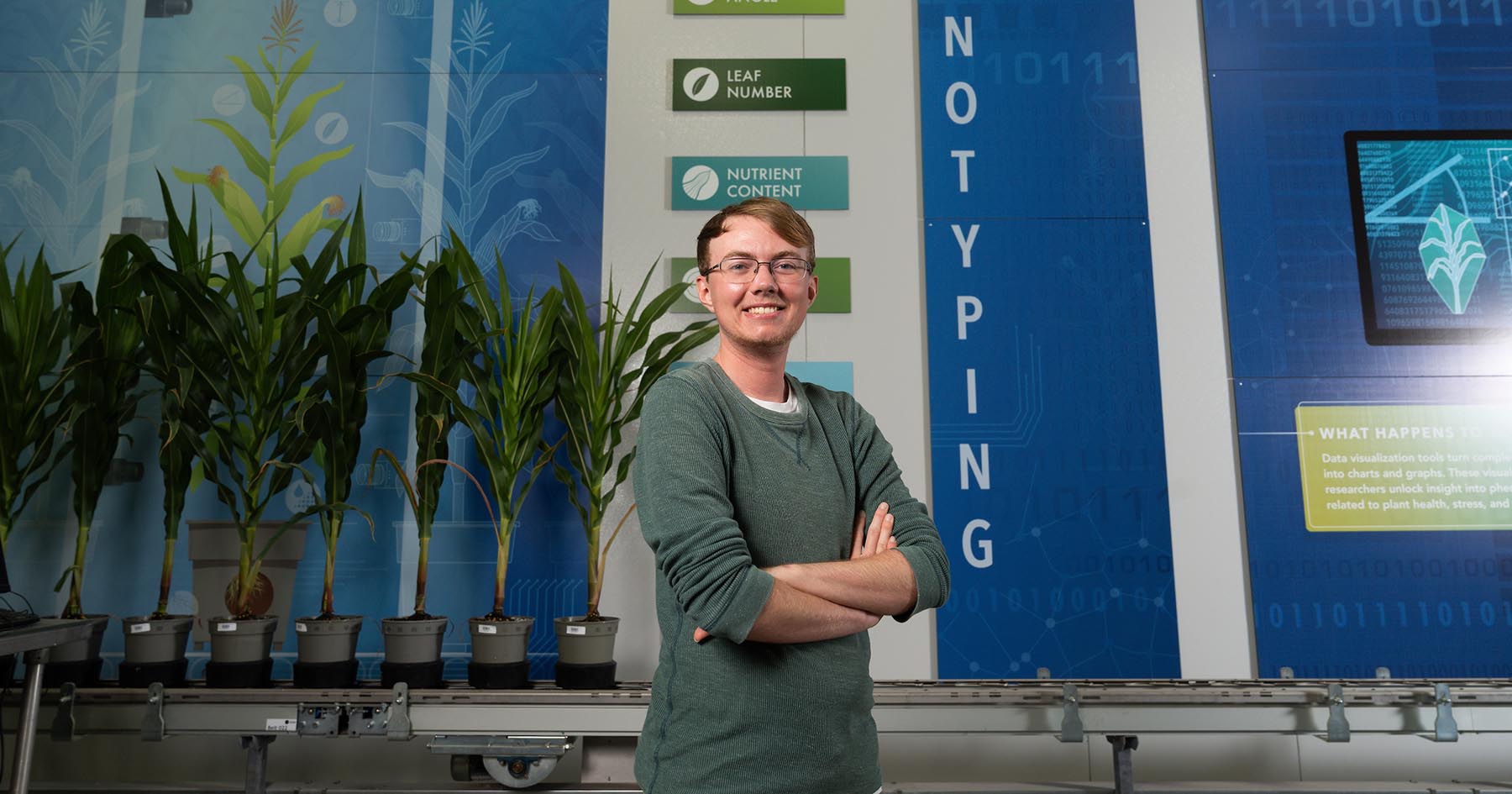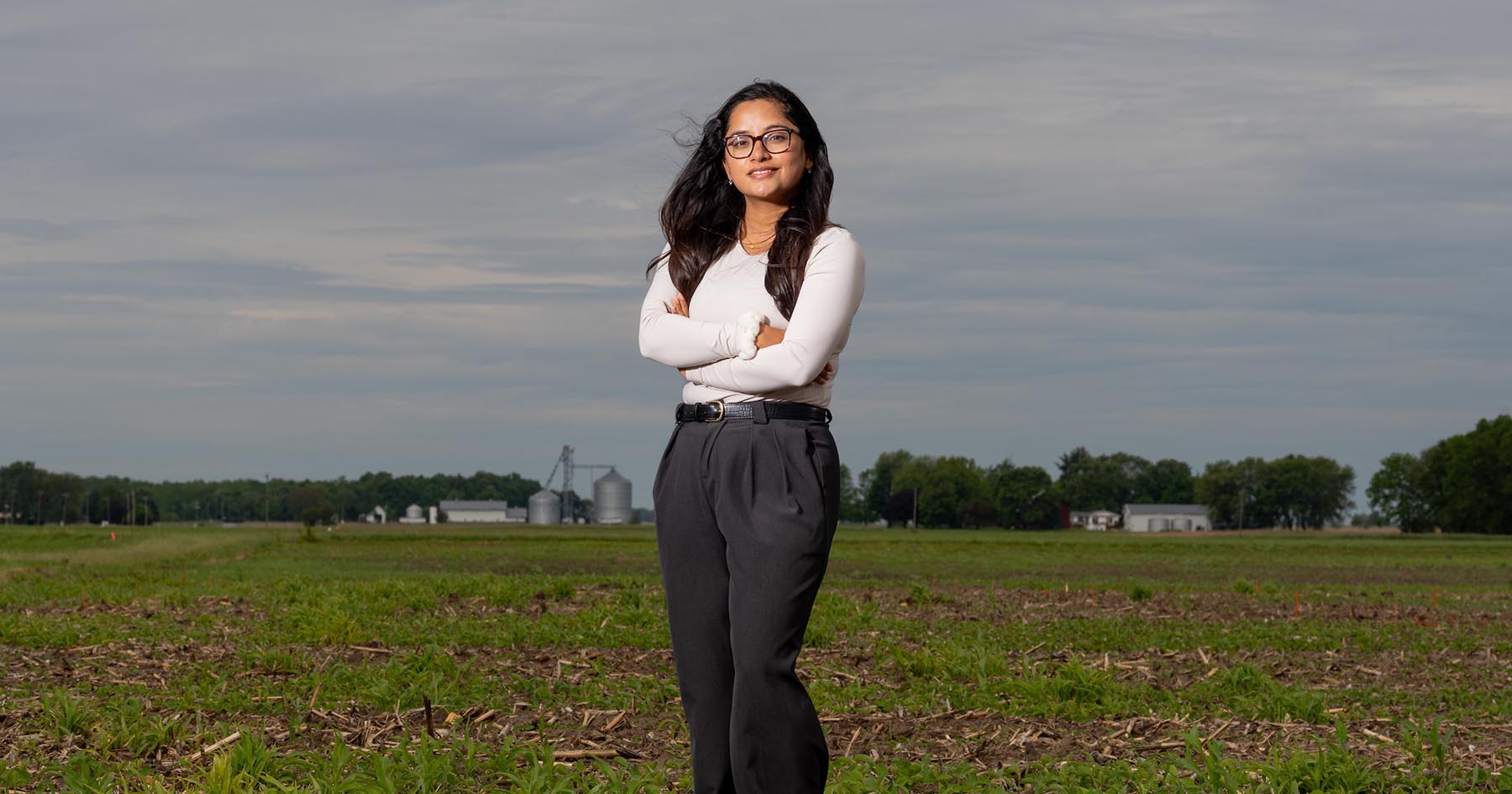Graduate Ag Research Spotlight: Aishwarya Chandrasekaran
"The thought that I’m actually contributing to something new is exciting to me. If my research is successful, foresters and researchers around the U.S. could benefit from it."
- Aishwarya Chandrasekaran
The Student
Aishwarya Chandrasekaran believes that her home country of India has focused on industry and information technology to the detriment of agriculture — so she made plans to do something about it. “I decided I should contribute where I can, and I thought research in agriculture would be the key,” she says. Chandrasekaran is from the Indian state of Tamil Nadu, in the southern part of the country. Although the region is largely agricultural, “Aish” grew up in the capital city of Chennai, without much exposure to rural interests. But as an undergraduate at Anna University there, the developing field of remote sensing piqued her interest. She completed an internship in it, working with scientists who were “completely into agriculture and ecology,” she says. “I came to understand the importance of agriculture and its major role in everyone’s life, especially in developing countries.” After completing her degree, she sought out master’s degree programs in the United States. She identified Purdue Agriculture as one of the top U.S. programs and contacted a number of faculty members before discovering the best fit for her background and interests with Guofan Shao, professor of forest spatial analytics in the Department of Forestry and Natural Resources. She made her first trip to the United States and began a two-year program under Shao’s guidance in August 2018.
The Research
Chandrasekaran’s research interests center around remote sensing, image processing, forest metrics and machine learning. She uses drones to measure tree canopies of a red oak plantation in Martell Forest, a 477-acre, Purdue-owned property 8.5 miles from campus. The data gathered by drones is useful in studying forest structure and health, and calculating biomass content. “My focus is to eliminate human error, save time and produce data for each tree in a plot,” she explains. “Plot-level data is restrictive. Tree-level data is more useful information.” While Chandrasekaran works toward getting her pilot’s license, she is collaborating with an aviation student to fly the drone.
Opportunities
Chandrasekaran expected to absorb a great deal of information at conferences, but other researchers’ interest in her work caught her by surprise. Filling in to teach an undergraduate course while her advisor was on leave also offered an unexpected chance to discover the joys of teaching. “That experience was something I never imagined I would get so soon,” she says. “That affirmed my desire to get into academia — teaching and research.”
Future Plans
In anticipation of completing her master’s degree, Chandrasekaran is looking for PhD opportunities in the U.S. After she finishes a doctoral degree and perhaps a postdoc, she plans to return to India. “I believe my country needs researchers working on agriculture and forests,” she explains. But Chandrasekaran is not all about work. In her leisure time, she enjoys baking, swimming, playing badminton, and watching classic Hollywood movies with friends.







